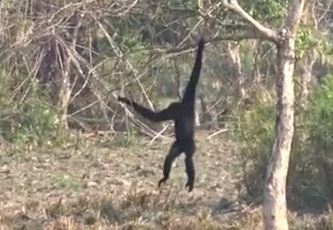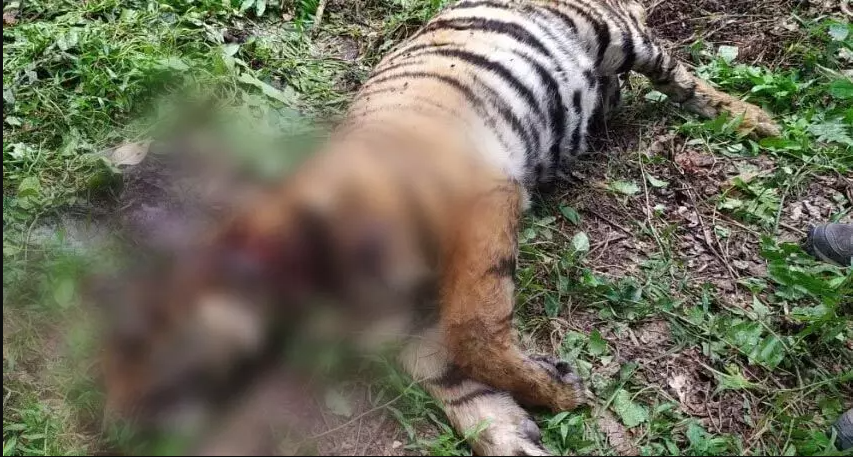
Rare monkey seen running on the ground like humans in Assam, IFS shared the video
News Update: The Hoolock Gibbon is a rare tailless ape. Eastern Bangladesh, northeastern India, and southwestern China are home to this primate. These monkeys are of medium size in size. Evergreen forest is their favorite place. Where they spend their life jumping on the heights of trees.
They survive by eating fruits, leaves etc. Males are black with white eyebrows. While females are brown. They make many types of sounds to make contact with each other. And yes, their speed is amazing. Females give birth to a single young after carrying a pregnancy for about 230 days. Their age is about 25 years.
Now a rare video of this animal is going viral on social media which has been posted by an IFS officer. In this, this monkey jumping on trees is seen running on two legs like humans.
This video is of Kaziranga National Park
This video was posted by ‘Indian Forest Service’ (IFS) officer Parveen Kaswan (@ParveenKaswan) on June 27 and wrote – Rare video of Hoolock Gibbon (hoolock hoolock is a primate of the gibbon family (Hylobatidae)) – this is the only one in India Ape, who is walking like humans. This video is from Kaziranga National Park in Assam. This tweet of the officer has got more than 80 thousand likes and more than two thousand likes till the time of writing this news. Also, many users have commented on it. While some people thanked the IFS for sharing this rare view of the forest, one user said that I should write it in case the UPSC pre exam may ask in question paper.
Hoolock got down from the tree and started running on the ground
It can be seen in this video that Hoolock descends on the ground from tree branches and starts walking on two legs like humans. Not only this, he starts running after walking some distance and then climbs a tree. It was a very rare sight, which is rarely seen. The Hulok gibbon is also known as ‘Hulo’. Very few people know that such creatures are also found in India. By the way, they live on the heights of the trees. In its next tweet, the IFS informed that the hoolock gibbon population has declined by nearly 90 per cent in the past four decades, and is now among the world’s 25 most endangered primate species.
Here’s the rare video of Hoolock Gibbon:


